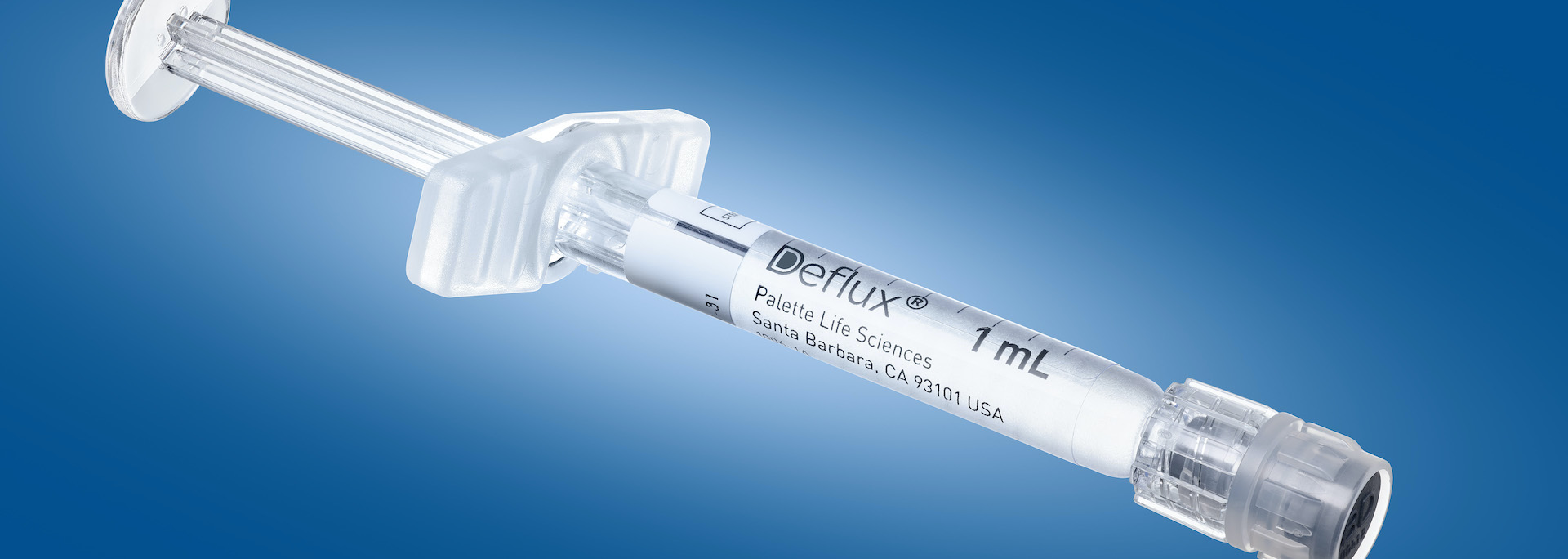The minimally invasive, recommended first-line treatment for immediate protection against VUR1,2
Evidence indicated that endoscopic injection is effective for the treatment of most VUR, while emphasizing the importance of pre-operative reflux grade and structural/functional bladder abnormalities in ultimate treatment success.1
Patients undergoing successful Deflux treatment receive immediate protection against further reflux associated renal damage, without the need for adherence to a long-term treatment regimen and continued reflux testing.1,3
Endoscopic treatment with Deflux not only approached success rates of open repair but offers significant advantages to patients and parents: outpatient surgery, lower morbidity (e.g., pain, scar), fewer complications and reduced cost.3,4
It was suggested that with the advent of Deflux, endoscopic therapy has become the first-line therapy for many patients with reflux.1













